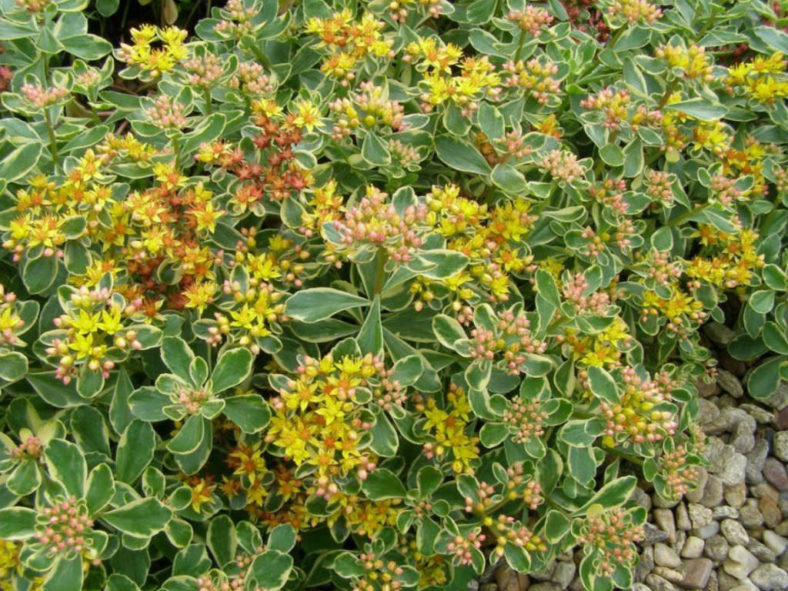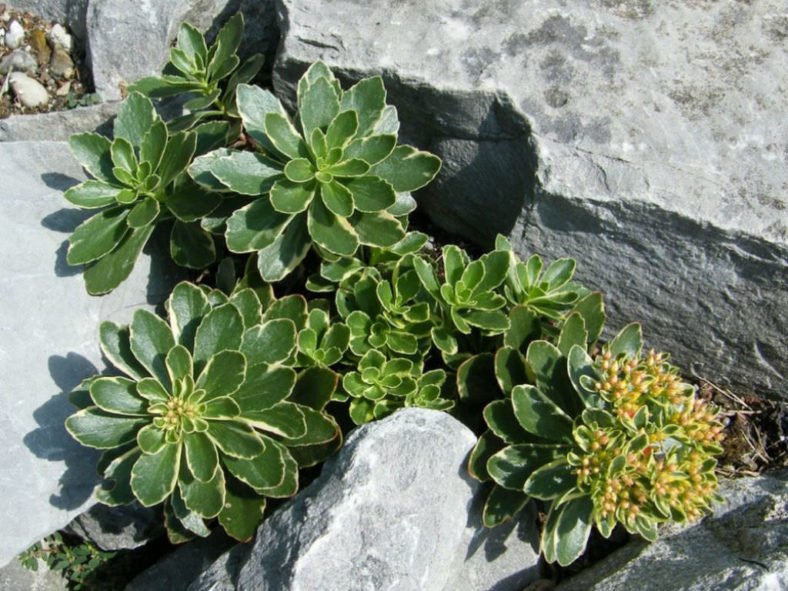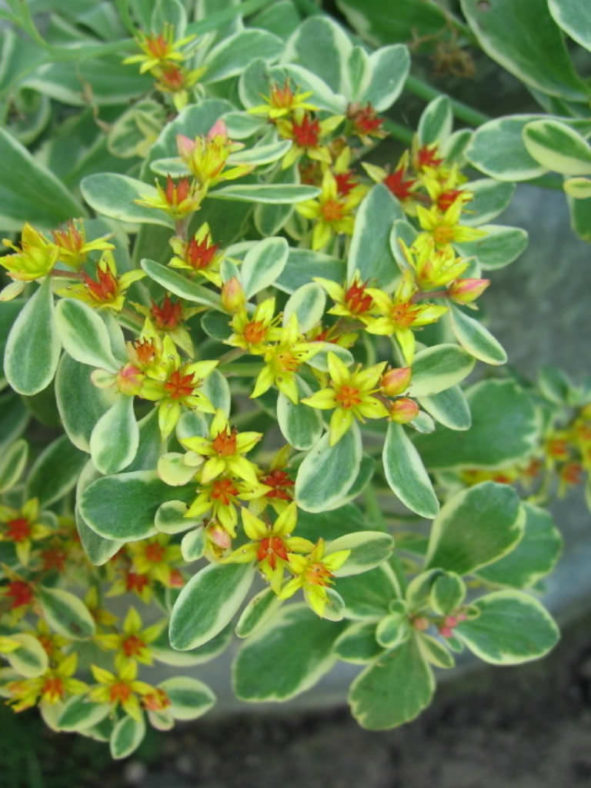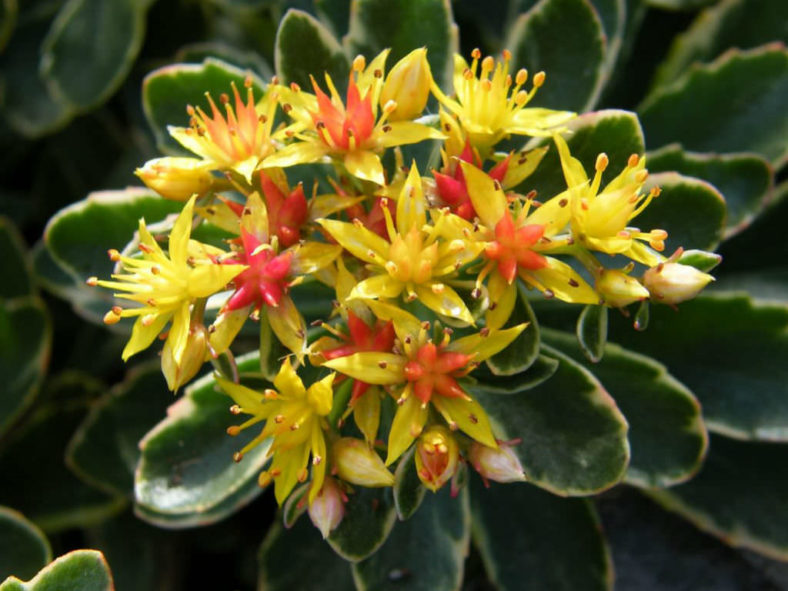Scientific Name
Phedimus kamtschaticus 'Variegatus'
Common Name(s)
Russian Stonecrop
Synonym(s)
Sedum kamtschaticum f. variegatum, Sedum kamtschaticum 'Variegatum'
Scientific Classification
Family: Crassulaceae
Subfamily: Sempervivoideae
Tribe: Umbiliceae
Genus: Phedimus
Origin
Phedimus kamtschaticus 'Variegatus' is a form of Phedimus kamtschaticus selected for its variegated foliage.
Description
Phedimus kamtschaticus 'Variegatus', formerly known as Sedum kamtschaticum 'Variegatum', is an attractive, low-growing succulent with a dense creeping habit. It can grow up to 4 inches (10 cm) tall. The tick, fleshy leaves are green with creamy-white, toothed margins, often tinged pink.
The yellow, star-shaped flowers appear in loose clusters in late summer.

How to Grow and Care for Phedimus kamtschaticus 'Variegatus'
Light: These light-loving plants will tolerate light or partial shade but prefer full sun and grow best in warmer environments.
Soil: Phedimus thrive in any well-drained soil. Good drainage is critical for preventing root rot or fungal diseases.
Hardiness: Phedimus kamtschaticus 'Variegatus' can withstand temperatures as low as -30 to 40 °F (-34.4 to 4.4 °C), USDA hardiness zones 4a to 10b.
Watering: The best way to water your Phedimus is to use the "soak and dry" method. Get the soil completely wet, and then wait until the soil is dry before watering again.
Fertilizing: Feed with low-balanced fertilizer to keep your plants happy and healthy. Use a diluted dose of half the strength recommended on the package.
Repotting: Repot your plants when they outgrow their current pot by moving them to a larger container to hold the plant better.
Propagation: Phedimus can be grown from seeds, division, or stem cuttings.
Learn more at How to Grow and Care for Phedimus.
Toxicity of Phedimus kamtschaticus 'Variegatus'
Phedimus plants can be mildly toxic to humans and animals.
Links
- Back to genus Phedimus
- Succupedia: Browse succulents by Scientific Name, Common Name, Genus, Family, USDA Hardiness Zone, Origin, or cacti by Genus
Photo Gallery
Click on a photo to see a larger version.


